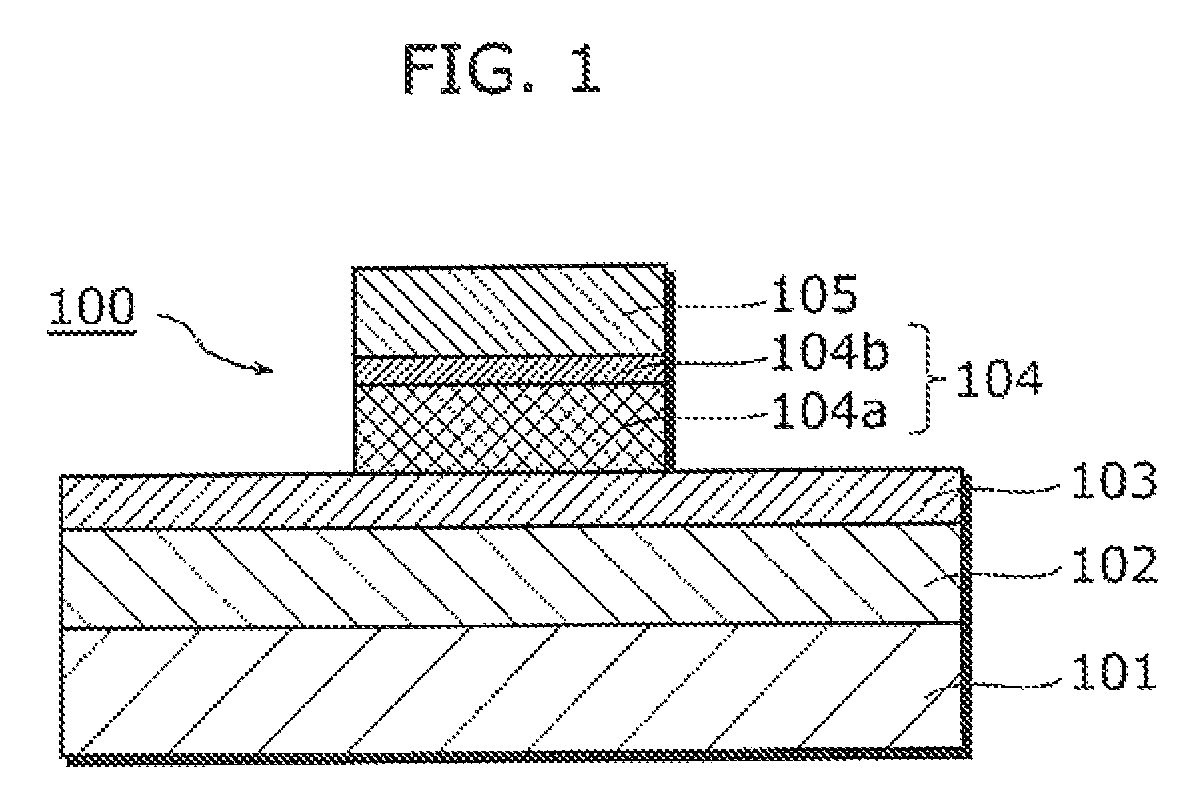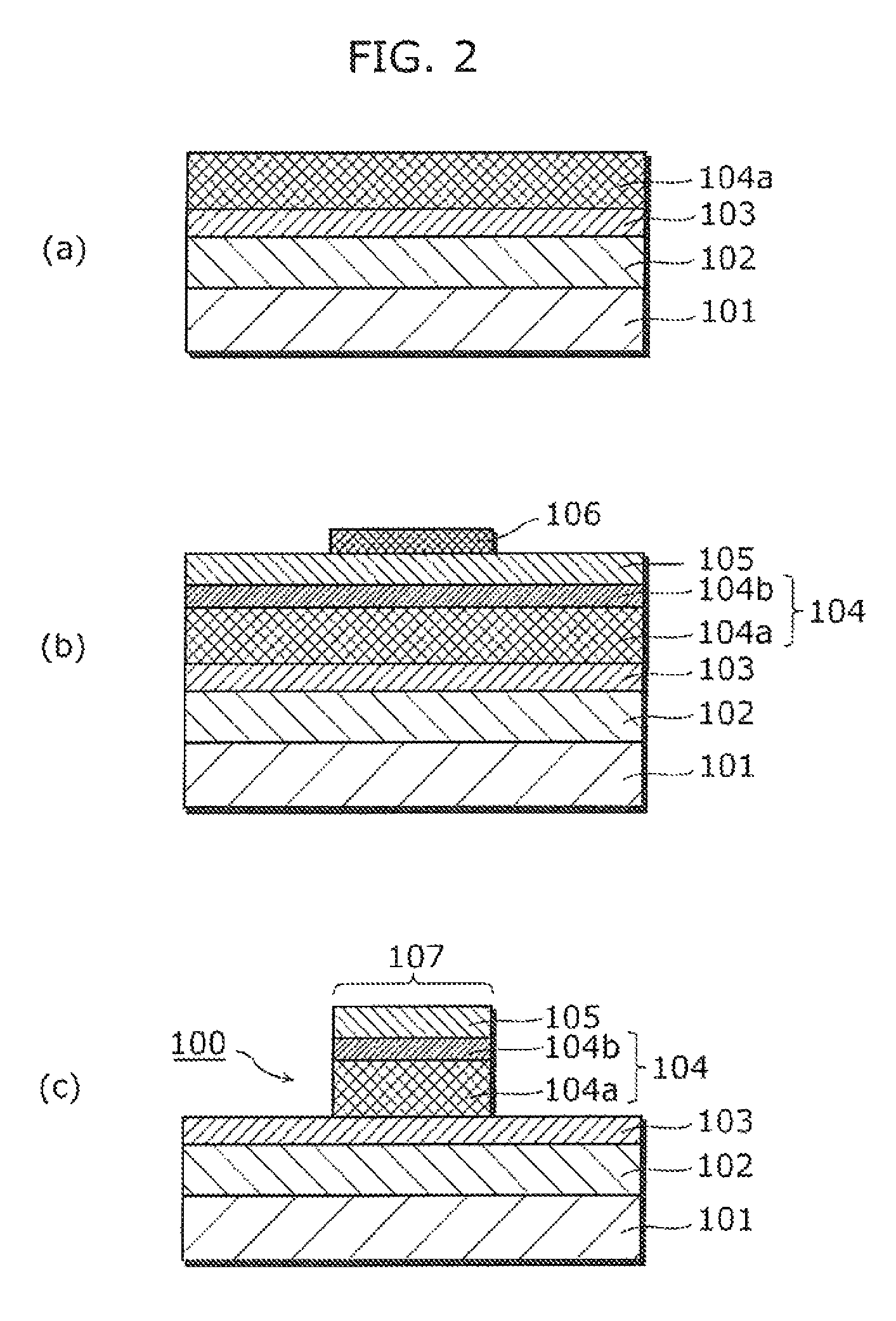Nonvolatile memory element and nonvolatile memory device
a non-volatile memory and element technology, applied in semiconductor devices, digital storage, instruments, etc., can solve the problem that the limit of the miniaturization of flash memories using existing floating gates cannot meet such a demand, and achieve the effect of stable operation
- Summary
- Abstract
- Description
- Claims
- Application Information
AI Technical Summary
Benefits of technology
Problems solved by technology
Method used
Image
Examples
embodiment 1
[0073]First, the following describes a nonvolatile memory element according to Embodiment 1 of the present invention.
[0074](Structure of Nonvolatile Memory Element)
[0075]FIG. 1 is a cross-sectional view showing a structure of a nonvolatile memory element 100 according to Embodiment 1 of the present invention. As shown in FIG. 1, the nonvolatile memory element 100 is a variable resistance nonvolatile memory element, and includes a substrate 101, an oxide layer 102 formed on the substrate 101, a first electrode layer 103 formed on the oxide layer 102, a second electrode layer 105, and a variable resistance layer 104 formed between the first electrode layer 103 and the second electrode layer 105. The first electrode layer 103 and the second electrode layer 105 are electrically connected to the variable resistance layer 104.
[0076]The variable resistance layer 104 is a bipolar variable resistance layer whose resistance state reversibly changes between a high resistance state and a low re...
embodiment 2
[0153]Next, a nonvolatile memory device according to Embodiment 2 of the present invention shall be described.
[0154]The nonvolatile memory element 100 according to the above-mentioned Embodiment 1 can be applied to various forms of nonvolatile memory device. The nonvolatile memory device according to Embodiment 2 is a nonvolatile memory device including the nonvolatile memory element according to Embodiment 1, and is a so-called crosspoint nonvolatile memory device in which the nonvolatile memory element is interposed at a crosspoint (three-dimensional crosspoint) between a word line and a bit line.
[0155](Structure of Nonvolatile Memory Device)
[0156]FIG. 25 is a block diagram showing a structure of a nonvolatile memory element 200 according to Embodiment 2 of the present invention. Furthermore, FIG. 26 is a perspective view showing a structure of part A (physical structure of a memory cell for four bits) shown in FIG. 25.
[0157]As shown in FIG. 25, the nonvolatile memory device 200 a...
embodiment 3
[0185]Next, a nonvolatile memory device according to Embodiment 3 of the present invention shall be described.
[0186]The nonvolatile memory device according to Embodiment 3 is a nonvolatile memory device including the nonvolatile memory element 100 according to Embodiment 1, and is a so-called 1T1R nonvolatile memory device in which a unit memory includes one transistor and one nonvolatile memory unit.
[0187](Structure of Nonvolatile Memory Device)
[0188]FIG. 29 is a block diagram showing a structure of a nonvolatile memory element 300 according to Embodiment 3 of the present invention. Furthermore, FIG. 30 is a perspective view showing a structure of part C (physical structure of a memory cell for two bits) shown in FIG. 29.
[0189]As shown in FIG. 29, the nonvolatile memory device 300 according to the present embodiment includes a memory main body 301 on a semiconductor substrate. The memory main body 301 includes: a memory cell array 302; a row selection circuit / driver 303, a column s...
PUM
 Login to View More
Login to View More Abstract
Description
Claims
Application Information
 Login to View More
Login to View More - R&D
- Intellectual Property
- Life Sciences
- Materials
- Tech Scout
- Unparalleled Data Quality
- Higher Quality Content
- 60% Fewer Hallucinations
Browse by: Latest US Patents, China's latest patents, Technical Efficacy Thesaurus, Application Domain, Technology Topic, Popular Technical Reports.
© 2025 PatSnap. All rights reserved.Legal|Privacy policy|Modern Slavery Act Transparency Statement|Sitemap|About US| Contact US: help@patsnap.com



